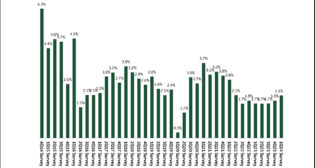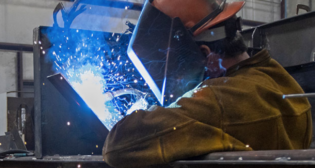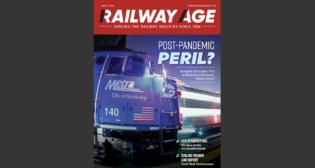
Justice For All?!?
Written by David Nahass, Financial Editor
Amtrak HHP-8 electric locomotive on the Northeast Corridor. Photo via Wikipedia.
FINANCIAL EDGE, RAILWAY AGE DECEMBER 2019 ISSUE: When an investor buys rail equipment to lease it to a customer (lessee), generally there are terms and conditions that govern the use and maintenance of that equipment during the term of the loan or lease. Specifically, in leasing, the investor in the equipment (the lessor) makes a forward bet on the future value of the equipment.
This residual estimate on the future value of the equipment is either the greatest joy or the greatest tragedy for equipment lessors. Today, consumers and suppliers of rail equipment are navigating a winding road through the challenging equipment market (freight and passenger).
In a soft market, one pivot point for investors is the condition in which a lessee returns equipment to the lessor at the end of a lease term.
As industry veterans would opine, in tight markets when an asset can immediately find a new home, investors may look the other way on certain condition items in order to continue to generate revenue. However, in weak markets, an investor may more stringently enforce return conditions to ensure that an asset is returned with maximum opportunity for redeployment as opportunities arise.
There is often a fair-sized gulf (or chasm perhaps) between consumers and suppliers in the interpretation of return provisions in finance documents. Irreconcilable interpretations of these condition-related issues can lead the parties to a courtroom. Disputes of this type, while frequent enough, are generally kept under wraps. After all, no one wants to become the subject of tawdry railcar repair facility gossip.
So it was surprising when the on-the-ball sleuths who issue Railway Age’s daily Rail Group News emails came upon two publicly identified incidents of condition-related lawsuits over a span of about two weeks’ time.
The more notable of the two was that Philip Morris Capital Corp. (PMCC) is suing Amtrak for what it has called the cannibalization of eight HHP8 passenger locomotives. The HHP8 locomotive is an 8,000 horsepower electric; Amtrak ordered 16 from Bombardier/Alstom in 1996. The HHP8 runs solely on a catenary system, and all have been in storage since 2014, “retired” from service because Amtrak deemed them unreliable and subject to frequent, unacceptable breakdowns.
Cannibalization means that PMCC is accusing Amtrak of taking parts from the HHP8 locomotive and using those parts in Acela Express power cars whose propulsion system is virtually identical (they are also Bombardier/Alstom). However, in the hierarchy of equipment- and locomotive-related events, cannibalization is pretty atrocious. To pilfer parts from someone else’s property (which is expressly prohibited by the terms of just about every rail equipment lease ever written) is a blatant disregard for the owner of the equipment and its residual investment in the equipment. PMCC is seeking $93 million.
At this point, the courts will sort out if PMCC’s accusations are accurate, and whether there was any wrongdoing by Amtrak. What is interesting is that PMCC has gone on record in its attempt to sue a ward of the U.S. government.
It is an interesting choice of action. PMCC is the leasing arm of one of the globe’s most notorious companies.
(It is no secret that the majority of PMCC’s profits come from tobacco sales. In 2018, PMCC’s parent company had a 43% market share of U.S. tobacco sales. Philip Morris is also paying roughly that same percentage of the greater-than $200 billion tobacco settlement that was negotiated in 1998.)
Leasing for profitable companies consumes capital and generates a tax shelter. The more profitable a company is, the more tax shelter it craves. Leasing fits that bill.
Amtrak’s most recent restructuring seems to have some traction, as it recently posted its best year ever in terms of revenue and ridership. Amtrak still lost roughly $30 million from operations in its 2019 fiscal year, and is working diligently to move to operational break-even economics.
Certainly, ceasing payments on locomotives sitting idle for five years will help that cause. If the facts prove out and Amtrak is found to be at fault, taxpayers and politicians can question what right Amtrak has to appropriation dollars if those funds were being used nefariously. Taxpayers have a right to expect Amtrak to abide by the contracts it signs.
Lessors are definitively entitled to have lessees comply with the terms and conditions of their leases.
However, as a matter of policy, were PMCC to “win” its suit against Amtrak, that additional $93 million would have to be added to the state and federal appropriations that must be approved every year in order to keep Amtrak in business. Taxpayers and politicians might struggle with that. Clearly, PMCC is not looking for a tax refund, but taxpayers might bristle at the additional funding requirements if Amtrak settles with PMCC.
The choice to litigate seems bold and askance with the best interests of both parties. PMCC and its parent company don’t need the bad press, and a win doesn’t sound like a win at all.
Got questions? Set them free at [email protected].



